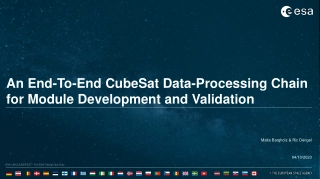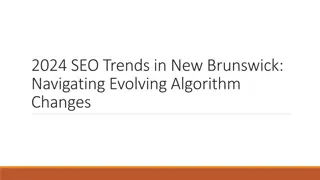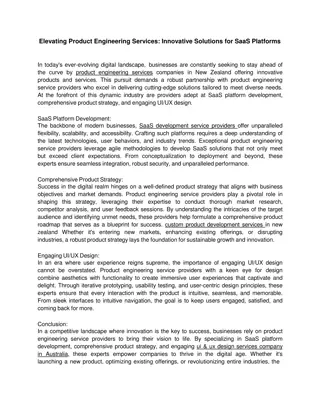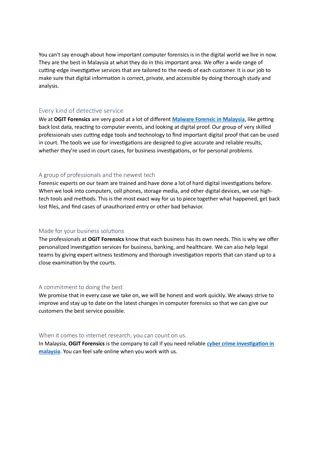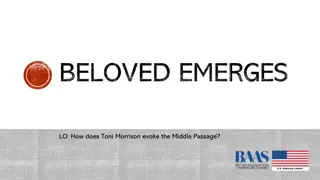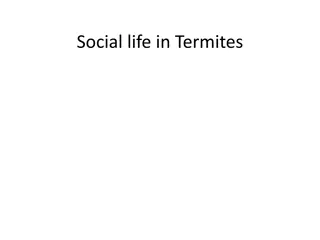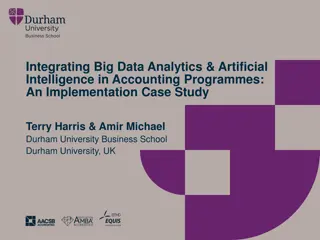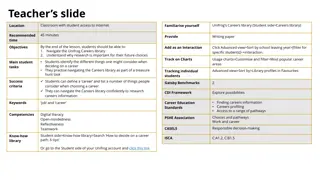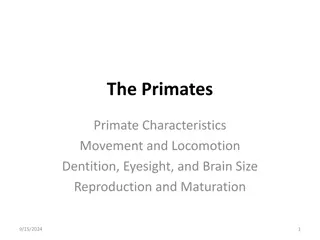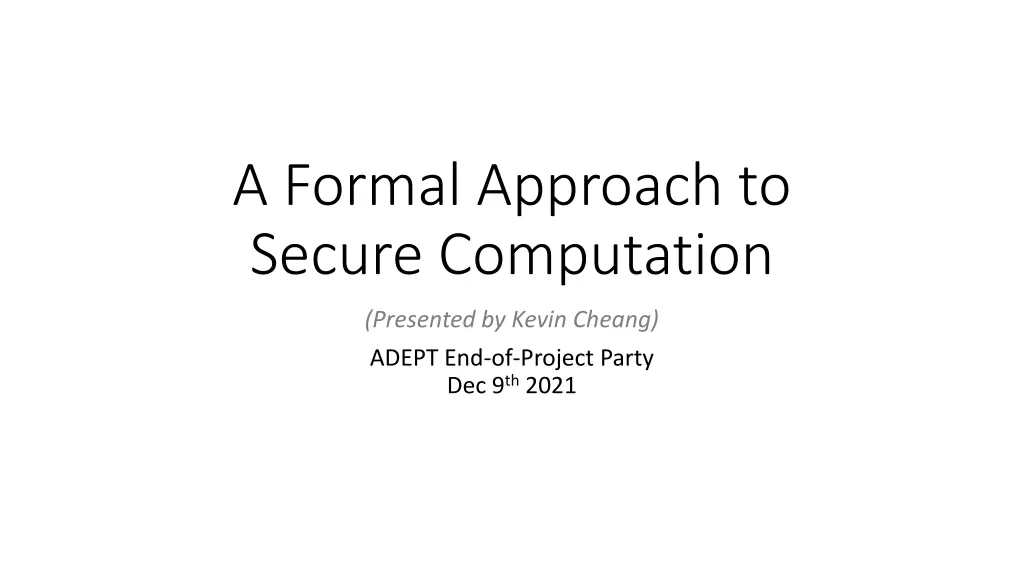
Secure Computation and Remote Execution in Enclaves
Learn about the formal approach to secure computation and remote execution of enclaves, including the use of trusted execution environments, secure measurement, integrity, and confidentiality. Discover how enclaves provide strong memory isolation and why they are essential for keeping data secure in cloud computing environments. Stay informed about recent attacks, such as Spectre and Meltdown, and explore the formal foundation for secure remote execution of enclaves.
Download Presentation

Please find below an Image/Link to download the presentation.
The content on the website is provided AS IS for your information and personal use only. It may not be sold, licensed, or shared on other websites without obtaining consent from the author. If you encounter any issues during the download, it is possible that the publisher has removed the file from their server.
You are allowed to download the files provided on this website for personal or commercial use, subject to the condition that they are used lawfully. All files are the property of their respective owners.
The content on the website is provided AS IS for your information and personal use only. It may not be sold, licensed, or shared on other websites without obtaining consent from the author.
E N D
Presentation Transcript
A Formal Approach to Secure Computation (Presented by Kevin Cheang) ADEPT End-of-Project Party Dec 9th2021
Demand for Secure and Remote Computation Strong memory isolation through enclaves An enclave is a program that provides memory isolation typically using hardware primitives and a software interface Enclave ? Why do we need them? Remote computation on the cloud is very common (e.g. AWS) Want our data to be kept secret Recent attacks: Spectre, Spectre-NG, Meltdown, Foreshadow, Fallout,
Trusted Execution Environments Remote Server Other Enclaves Other Enclave ? Applications Kevin Formally verify enclave programs execute correctly and without revealing secrets! Enclave ? Priviledged SW (OS / Hypervisor) I/O ?(?) ???? Enclave ? configuration: entrypoint page tables data pages Enclave Platform (CPU + Security Monitor / Firmware)
A Formal Foundation for Secure Remote Execution of Enclaves Pramod Subramanyan, Rohit Sinha, Illia Lebedev, Srinivas Devadas, Sanjit A. Seshia CCS 2017
A Formal Foundation for the Secure Execution of Enclaves Goal: Introduce a novel formal verification methodology based on a trusted abstract platform to model enclaves and to prove secure remote execution on enclave platforms Contributions: Formalization of enclave execution against a privileged adversary Formalization of secure remote execution (SRE) Decomposed SRE into secure measurement, integrity and confidentiality Modeled the trusted abstract platform (TAP) and proved SRE on TAP Refinement based methodology; showed SGX and Sanctum refines TAP
Secure Remote Execution SRE Definition: A remote platform performs secure execution of enclaves if the execution follows the expected semantics and does not reveal anymore than what is allowed by the adversary s observations. Theorem 3.2: An enclave platform that satisfies secure measurement, integrity and confidentiality property for any enclave program also satisfies secure remote execution.
The Trusted Abstract Platform get_addr_map set_addr_map destroy measure launch resume fetch enter pause store load exit platform CPU state enclave state address translation state pc regs mem current_eid owner enc_metadata addr_map cache os_metadata
A Formal Approach to Secure and Efficient Enclave Cloning Dayeol Lee, Kevin Cheang, Alexander Thomas, Catherine Lu, Pranav Gaddamadugu, Anjo Vahldiek-Oberwagner, Mona Vij, Dawn Song, Krste Asanovic, Sanjit A. Seshia [in submission at S&P 2022]
The Trusted Abstract Platform with Cloning (recently submitted to S&P 2022!) get_addr_map set_addr_map snapshot destroy measure launch resume clone fetch enter pause store load exit platform CPU state enclave state address translation state pc regs mem current_eid Owner enc_metadata addr_map cache os_metadata
A Formal Approach to Secure Speculation Kevin Cheang, Cameron Rasmussen, Sanjit A. Seshia Pramod Subramanyan CSF 2019
A Formal Approach to Secure Speculation Goal: Verify that programs are not vulnerable to transient execution attacks running on a given microarchitectural design Mitigations Software mitigations compiler extensions (e.g. /QSpectre), retpolines, page table isolation Hardware migitations constant time memory loads, cache partitioning, access time randomization, obfuscation of timers Contributions Formulating a general property to capture transient execution attacks Introduced an assembly intermediate representation for speculative platforms Automated verification of absence of transient execution attacks 11
Problem Statement Given a platform model, an adversary model, and a program, determine if the program is vulnerable to a transient execution attack void victim_function_v01(size_t x) { if (x < array1_size) { temp &= array2[array1[x] * 512]; } } Spectre Variant 1 void victim_function_v01(size_t x) { if (x < array1_size) { std::atomic_thread_fence(std::memory_order_seq_cst); temp &= array2[array1[x] * 512]; } } Spectre Variant 1 12
Secure Speculation Property Public ?1 Secret ?2 Secret ?3 Secret ?4 Secret 13
Evaluation Paul Kocher s list of 15 bounds check bypass examples Bounded model checking for exploit finding (5 steps) Inductive model checking for verification (1 step) Example Ex1 Ex5 Ex7 Ex8 Ex10 Ex11 Ex15 Fig. 3c NI BMC 6.6 secs 9.0 secs 10.2 secs 5.7 sec 9.6 secs 6.4 secs 5.8 secs 6.6 secs 12.9 secs Induction 5.0 secs 5.0 secs 5.7 secs 4.6 secs 5.8 secs 5.9 secs 4.8 secs 4.8 secs 5.4 secs 14
Conclusion Recently advances in side-channel attacks warrants formal verification of microarchitectural models and trusted systems The Trusted Abstract Platform is an abstraction of enclave platforms and enables formal reasoning about secure remote execution A verification methodology was introduced to verify the absence of transient execution attacks on programs running on a microarchitecture Future work Enabling automated and agile verification for enclave platform and microarchitectural processor designs using these existing methodologies Showing refinement of TAP to the implementation of Keystone

